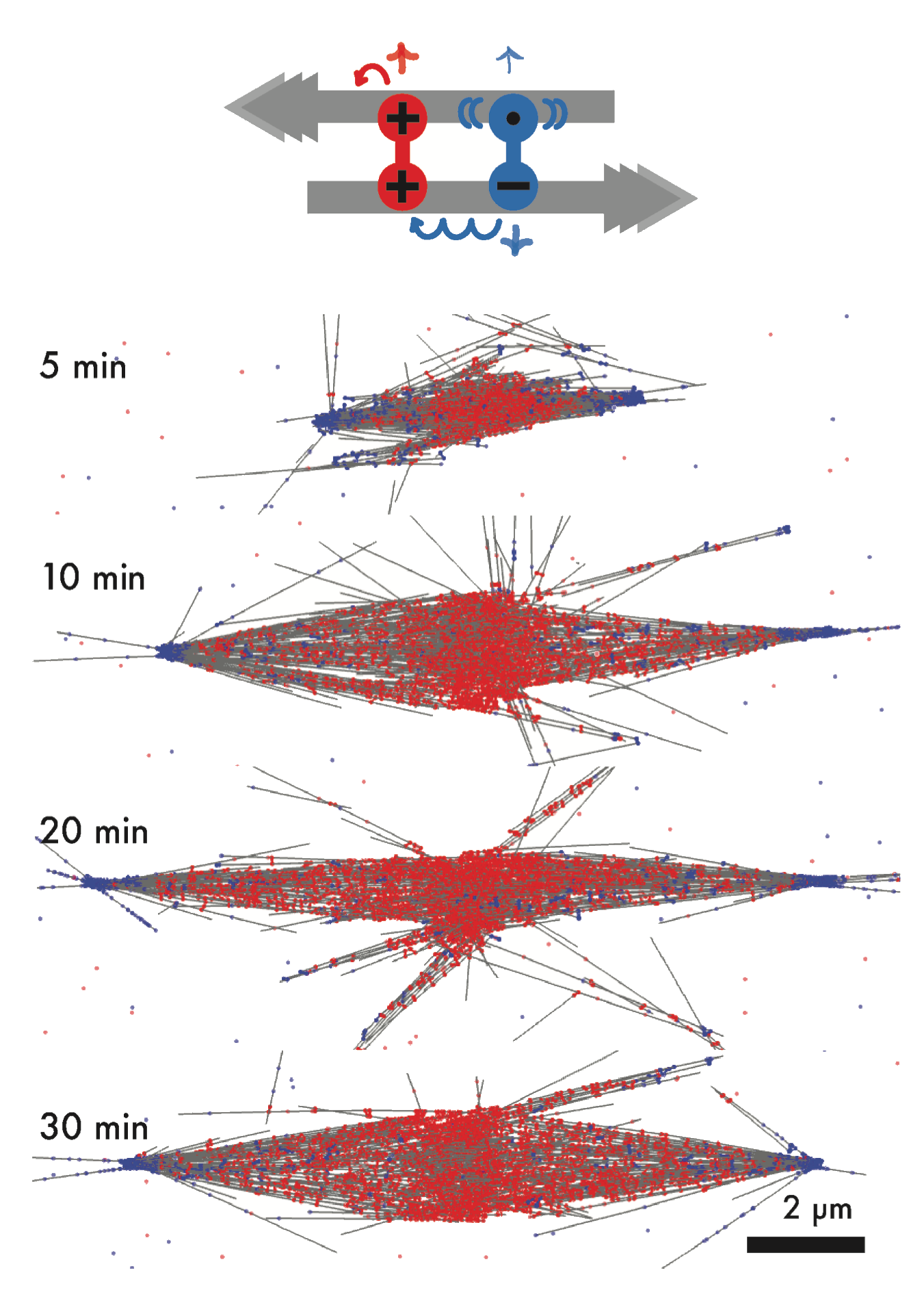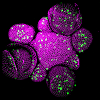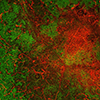
Root meristem of Vicia faba (broad bean) cells in anaphase and prophase stages of mitosis. Image from archive of Josef Reischig and licenced under CC BY SA 3.0 license as a part of Wikimedia Czech Republic's GLAM initiative.
New research reveals key mechanisms behind cell division
A breakthrough in the study of cell division has revealed critical insights into how cells organise the mitotic spindle structure that is responsible for segregating chromosomes during cell division.
The collaboration between the labs of Thomas Surrey (Centre de Regulació Genòmica) and François Nédélec (Sainsbury Laboratory, University of Cambridge) offers a simple recipe for understanding motor-driven processes in cell division and provides new insights into how evolution has shaped the properties of key mitotic motors. The research was published in the Proceedings of the National Academy of Sciences (PNAS).
They showed how specific motor proteins drive the self-organisation of microtubules into a bipolar spindle during mitotic division by revealing that two motors are sufficient to organise microtubules into a bipolar spindle in three-dimensional space.
“We focused on two motors with opposite directionalities, drawing inspiration from the key human spindle motors, kinesin-5 and dynein, which are known to play essential roles in mitosis,” Dr Surrey said.
Wei-Xiang Chew, who is the first author and a postdoctoral researcher at the Centre de Regulació Genòmica, used simulations on a high-performance computing cluster to systematically explore various combinations of motors: “These results reveal fundamental principles for the self-organisation of dynamic bipolar microtubule architectures and highlight how distinct molecular designs of mitotic motors are optimised for their task.”
Crucial role of mitotic spindle in chromosome separation for genetic stability and preventing disease
The separation of chromosomes during mitosis is crucial because it ensures that each daughter cell receives an exact copy of the genetic material, which is necessary for proper cell function and organismal development.
Mitosis is essential for growth and tissue repair and if it goes wrong it can lead to diseases. The process of mitosis requires the precise alignment and separation of chromosomes, facilitated by a structure called the spindle, which is formed by microtubules.
These microtubules are dynamic and constantly changing during cell division, making their precise arrangement crucial. Until now, however, the minimal set of components required to organise these dynamic microtubules into a bipolar spindle remained largely unknown.
Key findings
The crucial factor lies in the properties of these motors – a slower, plus-directed symmetric motor and a faster minus-directed asymmetric motor. These motors work synergistically to drive the self-organisation of the spindle structure.
The findings were made possible using the simulation engine Cytosim, developed in the group of Dr Nédélec. Cytosim simulated active networks of dynamic microtubules and motors to explore how specific motor proteins drive the self-organisation of microtubules into a functional bipolar spindle.
“In these simulations, microtubules self-organize into symmetric structures with two poles, and they do so without centrosomes, and thus could represent either animal or plant mitotic spindles", Dr Nédélec said.
The study’s results suggest that the motor properties of kinesin-5 and dynein are key to their successful role in spindle formation. Flowering plants lack the motor dynein, but another minus-end directed kinesins, ATK1, could replace dynein, forming stable bipolar spindles in combination with kinesin-5, underscoring the importance of motor properties in spindle assembly.
“This research not only enhances our understanding of the fundamental principles of spindle self-organisation but also sheds light on how different molecular designs of mitotic motors are tailored to their specific functions,” Dr Nédélec said.
“The study could have far-reaching implications for understanding cellular processes in both health and disease, as errors in spindle formation can lead to chromosome mis-segregation and contribute to cancer and other genetic disorders.”
Funding
This project received funding from the European Research Council under the European Union’s Horizon 2020 research and innovation programme and received support from the Spanish Ministry of Science and Innovation, the State Research Agency, FEDER, Human Frontier Science Program fellowship and the Gatsby Charitable Foundation.
Reference
Wei-Xiang Chew, François Nédélec and Thomas Surrey (2025) Molecular design principles for bipolar spindle organization by two opposing motors, Proceedings of the National Academy of Sciences (PNAS)






